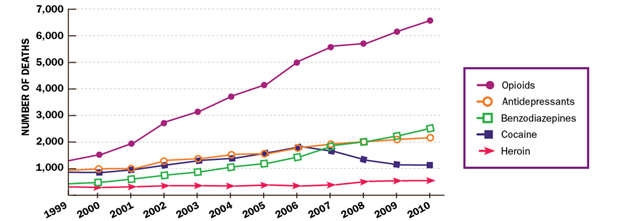
The epidemic of prescription painkiller abuse in this country, and its tragic consequences for women in particular, have been highlighted in a new report from the CDC. Historically, men abused prescription opioids in greater numbers than women, and were more likely to die from overdose, but the CDC numbers reveal that the gender gap is narrowing. More than 6,600 women died after overdosing on prescription painkillers in 2010—a 400% increase over 1999. More men are dying too, but the increase is not as dramatic.
Why is this happening? There are many factors, some of which relate to different utilization of healthcare by women and men and different prescribing practices. Women visit doctors more than men; report pain at higher rates and are at greater risk for chronic pain; are more likely to be prescribed pain medications; and are likely to be prescribed higher doses, for longer durations, than men.
Greater access to pain medications does not mean greater likelihood of abusing these drugs—males still exceed females in nonmedical use of prescription drugs. But the trends reported by the CDC underscore the urgent need for clinicians not only to engage in responsible opioid prescribing and pain management for their female patients but also to screen them and monitor for signs of abuse. Utilizing prescription drug monitoring programs, which can help reveal whether a patient is obtaining these drugs improperly, is key. Discussing the risks of opioids with patients is also important, as is exploring the possibility of other pain management options when possible.
The CDC recommends that, for their part, women can take measures to stay safe by strictly following their doctors’ directions for using pain drugs, disposing of unused medications, and discussing other medications they may be taking. It is also crucial for all patients never to share their prescriptions with family members or friends.
Prescription painkiller overdose deaths are a growing problem among women.

SOURCE: National Vital Statistics System, 1999-2010 (deaths include suicides)
Credit: CDC Vital Signs, Centers for Disease Control and Prevention
